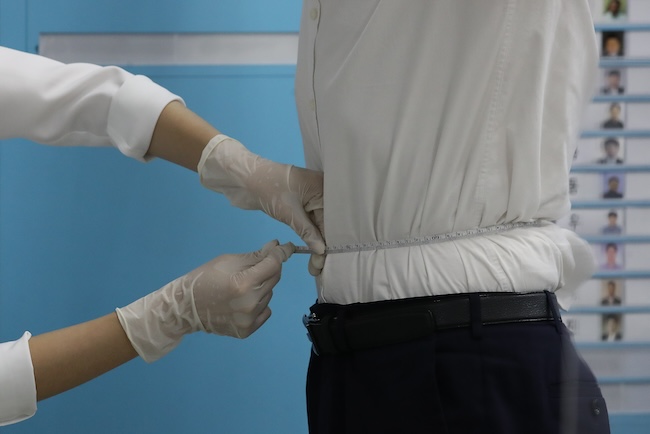
The obesity rate, indicating the percentage of individuals with a BMI of over 25, increased by 1.8 percentage points, rising from 30.2 percent to 32 percent.(Image courtesy of Yonhap)
SEOUL, Oct. 27 (Korea Bizwire) – Throughout the COVID-19 pandemic, there has been an overall improvement in public behavior, including smoking, drinking, and the utilization of medical services. Physical activity has also rebounded after reaching its lowest point.
On Thursday, the Korea Disease Control and Prevention Agency (KDCA) released the results of an analysis of changes in the Community Health Survey conducted before and after the COVID-19 pandemic.
The KDCA utilized the average figures for the three-year period from 2017 to 2019 as the pre-COVID index and the data from 2020 to 2022 as the post-COVID index for comparison.
The smoking rate among adults decreased by 1.8 percentage points, dropping from 21.2 percent before the pandemic to 19.4 percent after. The smoking rate for men also saw a decrease of 3.8 percentage points, going from 39.6 percent to 35.8 percent during the same period.
The monthly drinking rate, representing the percentage of individuals who consumed alcohol at least once a month in the past year, also experienced a decline of 5.4 percentage points, dropping from 60.8 percent before the pandemic to 55.4 percent after.
The high-risk drinking rate, which refers to the percentage of people who consume more than seven drinks in one sitting for men and more than five drinks for women, at least twice a week, also declined from 14.8 percent to 11.5 percent.
However, the obesity rate, indicating the percentage of individuals with a BMI of over 25, increased by 1.8 percentage points, rising from 30.2 percent to 32 percent.
The rate of weight adjustment attempts, representing the percentage of those making efforts to either lose or maintain their weight, also increased by 3.5 percentage points, moving from 62.1 percent to 65.6 percent.
M. H. Lee (mhlee@koreabizwire.com)






